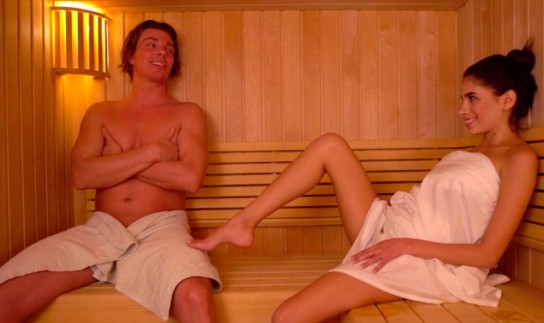It's remarkable that even with the onset of a frenzied rhythm of life, the development of various technologies, in particular, with the emergence of showers in our apartments, the popularity of bath-houses has not decreased, quite the opposite... Nowadays, a bath-house is a place where you can relax, relieve stress, restore your health and just have pleasant time. Our ancestors took only Russian baths, but currently, there are many national steam rooms to enjoy. And we should note that each bath-house is good in its own way!
All baths are divided into 3 main groups. They are characterized by design, temperature and, of course, humidity:
- Dry bath. A bath is called dry because its air is hot (from 60 to 120°C), and its humidity is up to 10-25%. Russian and Finnish are dry-air baths.
- Wet baths. Due to its name it is clear that these steam rooms are quite wet. Their humidity is close to 100%. Temperatures are equal to 50-70° C.
- Water baths.
Types of national steam rooms.
Finnish bath-house. It is also called a sauna. In Russia, saunas became trendy a lot of time ago. Perhaps, Finnish saunas are the main competitor of Russian steam-baths! Finnish steam baths differ from Russian baths by the fact that their air is less humid, as usually much less water is poured on the stove. Finnish saunas are recommended for people who like steam baths, but for some reason do not tolerate hot steam of Russian baths.
Russian bath (banya) (steam bath). Actually, today's Russian baths are the same baths our parents enjoyed, perhaps they have just become more spacious and comfortable. To obtain hot and humid air, hot stones are sometimes watered not only with plain water but also with kvass or beer.
There are two types of Russian steam baths - "black-heated" and "white-heated." The first type of steam bath might be quite interesting from the point of view of an average person, in particular, by the way the bath is heated. In "black-heated" baths, when heating the furnace smoke does not go out into the pipe, but through the doors and windows. Immediately before using the bath room's heating stops and the room gets ventilated. After that all openings (windows, doors) of the room get closed. To get rid of soot on the floor and on the steam bath walls, it is recommended to pour water on them.
"White-heated" steam-rooms are more popular that "black-heated" ones. Almost every country house has a "white-heated" bathhouse. In technical terms, it is quite simple, but its heating consumes a lot of wood.
Japanese bath is a type of water bath. Taking this bath supposes immersion of a person (up to his/her breast) in a barrel with water of 35-45°C.
There is also another type of Japanese bath that is "dry" bath. To take the steam-bath, Japanese people collect cedar shavings and sawdust and add there a variety of medicinal herbs. After that, the dry mixture, which absorbs human sweat, is heated to the temperature of 50-60°C.
In conclusion, we wish you to enjoy your bath!

